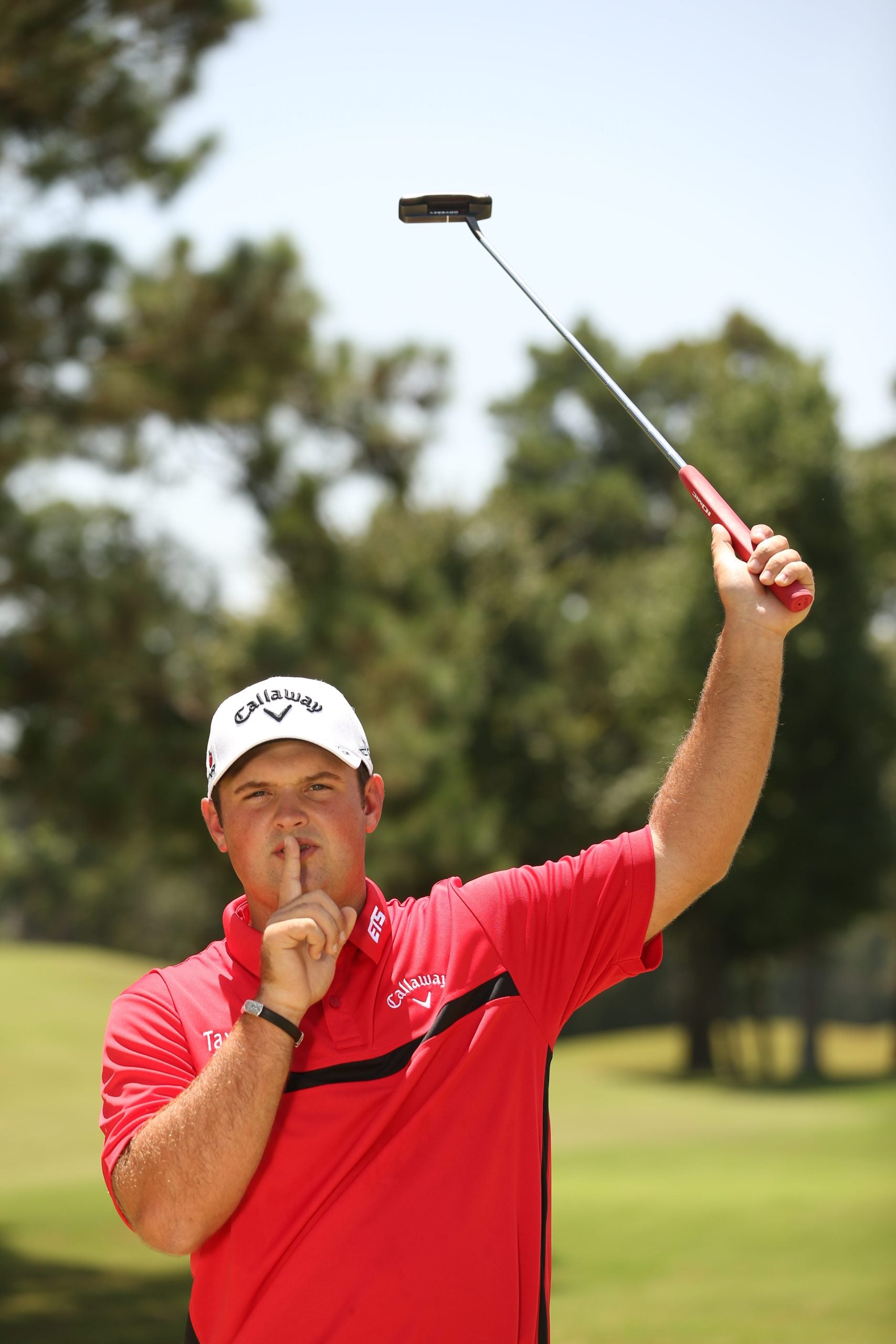If you look at my stats this year, you’ll see that I’m not as straight off the tee as some of the guys at the top of the money list (I’m 15th). Heck, you probably find more fairways than I do. I also don’t hit a whole lot of greens in regulation. Still, after four years on Tour, I’ve already won four times—including a World Golf Championship with a major-caliber field—and played in a Ryder Cup. My secret? Well, owning a 117 mph swing doesn’t hurt, but it’s not required. My real talent is finding a way to get the ball in the hole when I’m on or around the greens. If I’ve got wedge or putter in my hand, I’m dangerous.
You already know that feel and imagination are important from 100 yards and in, but the real path to short-game mastery is aggressiveness. And no, the word “aggressive” is not code for shooting at tucked pins or flying it over a huge lake. I’m talking about going for broke with your wedges and putter, clubs that strike fear into most weekend players. I’m going to teach you a whole new way to play bunker blasts, wedge shots and putts. These aren’t situations to dread. They’re opportunities to score! Try my five secrets on the following pages. You’re about to discover that these small swings can reap big rewards.
SECRET 1: Adopt a “Make Everything” Attitude
To heck with just getting it close. Your new scoring mantra? Roll ” em in!
I’m not one of those guys who’s content just to roll putts close, even from long range. I want to jar everything. Trying to make each and every putt I look at may be my biggest scoring key. The green is the best place to make up strokes, so an aggressive attitude is a must if you want to convert more than your fair share of putts.
The trick is to be aggressive without crossing the line into recklessness—that is, a complete loss of speed and distance control. Rolling it five or six feet past the hole on every attempt will hurt you more than help you. When I say “be aggressive,” I mean pick your line and speed, then eliminate all thoughts other than seeing your ball drop into the hole.
As my coach, Top 100 teacher Kevin Kirk, says, if your mind is worried about three-putting, you’ll focus on what you don’t want to happen rather than what you do want. There’s a better, more effective way to putt.

GO LONG TO STOP THREE-PUTTING
Your first step to instill an aggressive “make everything” mindset? Get comfortable with longer putts. Those 30- to 40-footers are the ones you’re probably happy just to cozy up to three feet. To me, that’s still a miss! Here’s the problem with lagging to a three-foot circle: If you’re just a little off, you could easily end up six or seven feet from the hole. On the practice green, roll some 30- and 40-footers with the intention of dying the ball into the hole every time. This way, if you miss, you’ll likely leave yourself a makeable two- to three-footer. Three-jacks are a common, costly mistake, so getting good at this drill will improve your scores, and fast.
Also, sprinkle in a few 10- and 15-footers to your long-putt practice. These are key birdie and par distances that should also be considered “must makes.” Work on them using the same aggressiveness as in your lag practice. Remember your mantra on the greens: Try to hole everything.
[pagebreak]
SECRET 2: Roll Putts with a Firm Left Hand
Control the putterface from start to finish for Tour-pro touch on the greens.
On Tour, two techniques for putting are popular: (1) using the right hand to power the forward-stroke, and (2) rocking the shoulders to move the putterhead back and through. In my opinion, these moves can cause you to jerk the putterhead off line. I prefer to focus only on swinging my left hand. My left hand is weaker than my right and less powerful than my shoulders, so it’s easier to control. Although I’m right-handed, I play tennis and Ping-Pong with my left hand, and I’m a southpaw putter, too. When I’m rolling it well, I feel like I’m striking the ball using a backhanded stroke. To copy my motion, simply think about moving the back of your left hand straight down the target line without flexing your wrists, and you’ll have the proper feel.
MY BACKHAND PRACTICE DRILL
Place your left hand on the grip as normal, then wrap your right thumb and forefinger around your left wrist (inset, below). Press the knuckles of your right hand against the outside of your left thumb to nicely lock in your hold. This special grip removes any influence from your right hand, simplifying everything. The idea is to feel like your left hand is doing all of the work. As you practice with this grip, notice how easy it is to keep the putterface square and to stop the putterhead from passing your hands too early. Make about a dozen strokes, then switch to your normal grip. If you can mimic the same feel, you’re money.

[pagebreak]
SECRET 3: Build Your Own Short-Shot Arsenal
Rattle the pin from inside 60 yards! All you need is a lob wedge and three easy moves.
After your putter, your wedges are your most important tools for scoring, both around the green and from the fairway and rough in the 100-yards-and-in range. Although many teachers—including mine—advise the use of multiple wedges around the greens, I grew up watching Phil Mickelson work his short-game magic, and I’ve learned to play just about every short-game shot you can imagine with my 61-degree lob wedge. Sure, it takes some practice, but mastering one wedge for all of these shots simplifies things and pays dividends, whether you shoot in the 60s or the 90s. All you have to do is alter a few basic elements in your setup and swing (see photos, right). With a practice session or two, you’ll be pitching it close from everywhere.
ONE CLUB, THREE SCORE-SAVING SHOTS
For greenside pitch shots with your lob or sand wedge, simply change the combination of backswing length, clubface angle and release. This lets you hit high shots, medium-trajectory shots and low runners with ease. Here’s how to do it.
THE LOB
To hit it high and soft, make a three-quarter backswing, stopping your motion when the clubshaft sits straight up and down (photo, near right). Let the clubface rotate slightly open as you swing to the top—this will provide extra loft at impact. Let the clubhead fully “release” and pass your hands through the hitting zone. This means turning your right hand on top of your left (photo, far right). This is the rare shot that demands that you release the club early—the earlier, the better. Your primary goal when hitting a lob? Get the club ahead of your hands at impact. You’ll be lobbing it tight in no time.

THE STANDARD
For a medium-trajectory, medium-spin shot, stop your backswing at waist height, or when the clubshaft is parallel to the ground. Unlike the lob shot, don’t let the clubface open relative to your path. (If you stop your swing at the top and look to the right, the toe of the club should point straight up in the air.) As you swing down, make a “slow” release so that the clubhead and your hands reach the ball at the same time (middle photo, right). Your right hand shouldn’t roll over your left until the ball is well on its way to the flag.

THE LOW RUNNER
If the situation allows you to hit a low, running shot across the green (instead of flying it to your target), then roll with it, baby! It gives you more control. Set up with a square clubface and take the club back until it creates a 45-degree angle with the ground (photo, near right). Coming down, lead the club with your hands so that the shaft leans slightly toward the target when you strike the ball. This “pinches” the ball against the ground for more control. Through impact, let your hands release so the clubface closes fully. The ball will pop up and hit the ground quickly, running the rest of the way to the hole. Time for an easy tap-in.

[pagebreak]
SECRET 4: Flight Your Wedges
Shorten your swing—back and through—for pin-seeking shots.
One of the biggest mistakes you can make on full wedge shots is hitting the ball too high. That’s easy to do if you “scoop” the ball through impact or just swing too hard. For accurate wedge shots, both from the fairway and the rough, I use a shorter backswing and an abbreviated finish. You should too. This combination—known as “flighting” the ball—creates a slightly delofted impact position with forward shaft lean and helps you compress the ball against the clubface. It also helps you hit down on the ball more with a slightly steeper angle of attack, a big help when the ball is sitting in the rough.



With flighted wedges, keep your weight centered at impact (don’t get out in front or “hang back” on your right side too much) and turn your hips through impact, just as you would on a normal shot. And resist the impulse to swing at 100 percent speed—the extra MPHs will launch the ball too high.
[pagebreak]
SECRET 5: Swing Fast in the Sand
Step on the gas in a bunker. High-speed swings get you on and close.
I rarely look at a greenside bunker as a true hazard, and neither should you. Unless the ball is buried or in some other extra-tough lie, I always try to hole the shot, just as I do with putts or chips. Because I use my lob wedge for almost every short-game swing, including those from greenside bunkers, I know exactly how the club will react in the sand. I also know that the wider sole of my lob wedge will give me enough bounce to swing as aggressively as I want.
As I’m sure you’ve guessed by now, that’s my real secret for a good bunker player: Be aggressive. That means never being tentative with the splash through the sand. To mimic my go-for-it style, make sure your clubhead enters the sand as close to the ball as possible, and give it plenty of speed. Think about “smacking” the wide sole of your wedge against the surface of the sand directly under the ball. I never try inconsistent chunk-and-run bunker shots, and I don’t recommend that style for you. Sand is the perfect surface to produce plenty of spin, so take advantage of it, swing away—and make a big splash.

This is Patrick Reed’s fourth year on the PGA Tour. He has four wins, $9.9 million in earnings and is ranked 19th in the world.






